1. 引言
在过去的十年里,通过精确的宇宙观察得到了令人惊讶的宇宙模型:宇宙中83%的物质是暗物质,另外17%是可见的普通物质[1] ,暗物质是宇宙质量的主导形式[2] 。迄今,通过数值模拟和引力透镜观测能精确地确定暗物质分布,并且粒子物理学家已经提出了十几种可能的暗物质候选者[3] -[12]。几十年来,捕获暗物质一直是物理学家的最大愿望,然而物理学家们依旧两手空空[13] 。
一百年来多种场论被提出,并试图找到场物质粒子[14] -[17],遗憾的是迄今尚未实现。另外,一些学者也试图将暗物质与场物质统一[18] -[20],然而仍未实现合理地统一。
从2000年至2002年,高级薄电离量能器(Advanced Thin Ionization Calorimeter,简称ATIC)的研究人员观测到210个电子和正电子,这比预期多70个,他们认为这些是由于暗物质所产生的。天体物理学家认为两个暗物质碰撞会湮灭而产生正负电子或其他粒子–反粒子对。与物质反物质探索和轻核天体物理研究有效载荷(Payload for Antimatter Matter Exploration and Light-Nuclei Astrophysics,简称PAMELA)的研究小组所发现的一样,暗物质的湮灭应产生等量的电子和正电子。Cho认为PAMELA观测到的是正负电子对产生的起始阶段,而ATIC是观测到了整个碰撞的过程;一些理论物理学家认为ATIC和PAMELA观测的数据是完全兼容的[21] 。对于ATIC和PAMELA观测到的电子和正电子流,J Chang等人也认为暗物质的湮灭可以解释这种现象[22 ,23]。冷暗物质探测II (Cryogenic Dark Matter Search II,简称CDMS II)合作组的研究表明暗物质的候选者具有电离的特性[24] 。另外,已经有大量的实验研究表明在“真空”中可以生成正负电子对以及正负电子对湮灭消失[25] -[28]。大量研究表明暗物质粒子可能是一种包含正负电子的稳定粒子。而在一定条件下正负电子对够湮灭释放出能量,形成能量较低且稳定的暗物质粒子;在一定的条件下,暗物质粒子吸收足够的能量,能够电离成正负电子对。幸运的是,我们已经完成了大量的正负电子对产生与湮灭的相关实验,从本质上来看,已经捕捉到了暗物质粒子。
本文初步建立了一种暗物质的正负电子共振体(Electron-Positron Resonator,简称EPR)模型,并采用EPRs模型解释电场、磁场、电磁场和引力场的形成,实现电场、磁场、电磁场和引力场的合理统一以及暗(实体)物质与场物质的合理统一。
2. EPRs模型
2.1. 模型建立
图1为暗物质的EPRs模型示意图,一个EPR中含有一个电子e−和一个正电子e+,e−和e+相互作用,不停地围绕共同的中心点O做圆周运动。在某一瞬间,EPR中e−和e+在一个平面内运动。由于EPRs之间的相互作用,运动状态不断变化,e−和e+可能运动到球面的任何位置。
2.2. EPRs之间的相互作用
两个EPRs之间主要存在瞬时库伦力、瞬时洛伦兹力和瞬时取向力。瞬时库伦力和瞬时洛伦兹力均同时存在吸引力和推斥力。EPRs之间的各种运动状态的概率是相等的,总体上看,瞬时库伦力和瞬时洛伦兹力的吸引力和推斥力是相互平衡的。瞬时取向力也同时存在吸引力和推斥力,但吸引力占主导地位。
EPRs相互之间能够相互作用,并能交换能量。如果没有外界影响,EPRs的e−和e+围绕共同的中心旋转。当从其他EPRs吸收能量,而使的e−和e+之间出现瞬时相对位移,各自运动中心远离,电偶极距增大。e−和e+的相互作用会使其恢复到原来的状态,就形成了瞬时振荡电偶极子。EPRs会与周围的EPRs相互作用,释放能量,恢复到原始运动状态,而会诱导周围EPRs成为瞬时振荡电偶极子(见图2)。EPRs通过相互瞬时诱导进行能量交换,这种瞬时诱导力同时表现为吸引力和推斥力,但吸引力占主导地位。
EPRs之间的作用力包括瞬时库伦力、瞬时洛伦兹力、瞬时取向力和瞬时诱导力。这种相互作用是短暂的,但却不断频繁发生。瞬时库伦力和瞬时洛伦兹力同时存在吸引力和推斥力,二者总体上是平衡的。瞬时取向力和瞬时诱导力也是同时存在吸引力和推斥力,但吸引力占主导地位。EPRs间主要表现为吸引力,因此EPRs有变密的趋势。在一定范围内,EPRs间的作用力随着间距增大而减小,随着间距减小而增大,而推斥力比吸引力的变化速度快。当达到一定的密度时,吸引力和推斥力平衡。
2.3. EPRs与一般物质的相互作用
与EPRs之间的相互作用类似,EPRs与一般物质之间的作用力包括瞬时库伦力、瞬时洛伦兹力、瞬时取向力和瞬时诱导力。这种相互作用是短暂的,但却不断频繁发生。瞬时库伦力和瞬时洛伦兹力同时存在吸引力和推斥力,二者总体上是平衡的。瞬时取向力和瞬时诱导力也同时存在吸引力和推斥力,但吸引力均占主导地位,EPRs间主要表现为吸引力。EPRs与一般物质之间的作用力随着间距增大而减小,随着间距减小而增大,而推斥力比吸引力的变化速度快。当达到一定的密度时,吸引力和推斥力平衡。
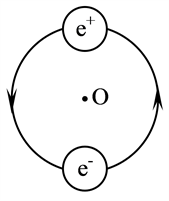
Figure 1. EPR model of dark matter
图1. EPRs模型示意图
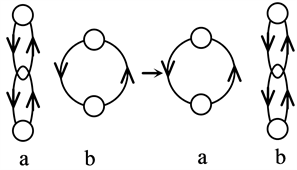
Figure 2. Mutual induction of EPRs
图2. EPRs相互诱导
2.4. EPRs的空间分布
在一定范围内,如果没有一般物质,EPRs将均匀分布。如果出现一般物质,由于EPRs与一般物质相互作用,而使EPRs的密度升高。星体质量越大,EPRs的密度越大。具有很大质量的星体与EPRs的作用强度高,使EPRs密度大幅升高,致使EPRs变形压缩,进而对周围的EPRs的吸引力也随之升高。因此在星体周围,EPRs的密度具有一定的梯度,随着与星体的距离增加而密度降低。另外,由于星体一般围绕另一个星体或星系运动,同半径的EPRs随之以相同速度运动。一些星体有自转运动,星体的质量越大,牵引的范围就越大,质量越小的星体,牵引的范围就越小。在一定范围内,EPRs随着星体一起转动。超过一定的范围后,EPRs随着星体自转的速度逐渐降低,就存在了一定的速度梯度。以地球为例确定EPRs的牵引半径,地球对EPRs的牵引力提供向心力,那么地球牵引EPRs的范围约为40,000 km。
Ostriker认为暗物质由于吸引力而聚集在一般物质周围,且由于推斥力而几乎均匀地遍布整个宇宙[29] 。且象许多模型预测那样,暗物质粒子与一般物质的相互作用比中微子弱,能够进入星体内部[30] -[31]。另外,暗物质与一般物质往往在宇宙的同一个空间聚集,很难在大尺度上区分暗物质和一般物质。因此在一般物质集中的空间,也会发现暗物质在那里聚集;同时像预期那样,引力场更加强大了[32] 。由于星系和星系团使暗物质聚集,而星系内部有很多小的暗物质子光圈,这些暗物质子光圈是由于一些星体的牵引而形成的[33] 。
图3是加拿大–法国–夏威夷联合望远镜(Canada-France-Hawaii Telescope,简称CFHT)的研究小组通过暗物质能够扭曲星系团中的光线这一原理绘制的暗物质分布图。盒子里显示的是十亿光年的跨度,更明亮的空间里暗物质的密度更高,可以看到大星系团的空间暗物质集中,就形成了网状分布。在盒子的后面(左侧),三个蓝色的圆盘代表三个远方的星系。盒子中的黄线代表这三个远方的星系所发出的光线在宇宙中传播的路线。在没有物质干扰的区域,光线是直的,而有物质影响的区域,光线受到引力作用而发生明显弯曲(黄线中断表明是在暗物质团的后部通过)。光线很少在遇到一个暗物质团而发生较大弯曲,而都是受到一系列暗物质团的影响逐渐弯曲的[34] 。研究表明光线通过大规模暗物质分布的空间会发生弯曲[35 ,36]。笔者认为,光线的弯曲是由于EPRs的密度变化引起的。光线逐渐弯曲也表明EPRs的密度是逐渐变化的。
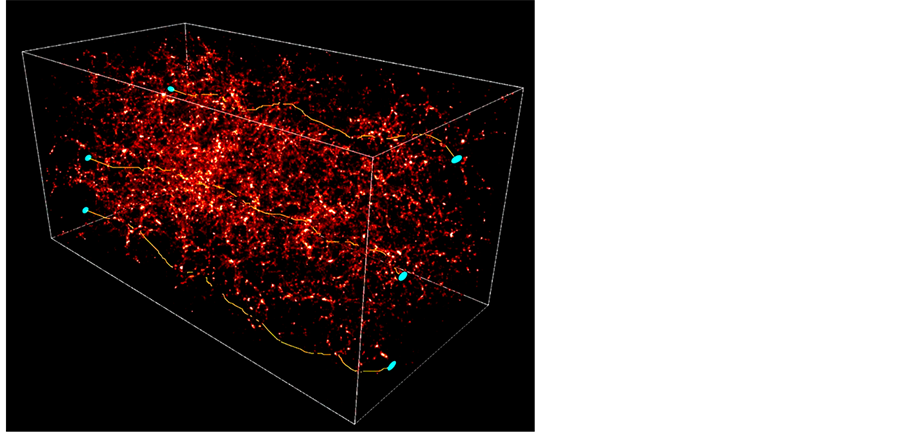
Figure 3. Image of dark matter distribution mapped by CFHT
图3. CFHT测绘的暗物质分布图
3. 基于EPRs模型的暗物质与场物质统一
3.1. 电场
EPRs中的e−和e+围绕共同的中心O做圆周运动。当空间存在带正电粒子时,e−的运行轨道向带正电粒子方向移动,同时e+的运行轨道向远离带正电粒子方向移动,使e−和e+各自的中心不再重合,产生了明显的极化。而这种极化规律十分明显,由近及远极化的程度不断降低,带电粒子周围的EPRs极化由近及远的规律变化形成电场。同理,当空间存在带负电粒子时,e+的运行轨道向带负电粒子方向移动,e−同时的运行轨道向远离带负电粒子方向移动,形成电场(见图4)。
从本质上看,电场是由EPRs极化产生的,可采用EPRs的极化来表示电场,采用EPRs的极化率表示电场强度。采用EPRs的极化表示电场反映电场本质上是暗(实体)物质的规律变化,使暗(实体)物质与(电)场物质得到合理统一。
3.2. 磁场
当空间存在直电流,将对EPRs产生影响。为了研究方便,将EPRs内e−和e+的运动方向分别投影到中心点O与直电流所确定的平面和通过中心点O且与直电流垂直的平面。当e−和e+的运动方向垂直电流方向,将不受影响,运动仍杂乱无章。当e−和e+的运动方向平行电流方向,靠近电流一侧的e+的运动方向与电流一致时,远离电流一侧的e−的运动方向与电流相反,e−和e+的运动轨道均向靠近电流方向移动。e+的运动轨道被拉伸,而e−的运动轨道被压缩。当e+运动到远离电流一侧,e−运动到靠近电流一侧时,e+的运动方向与电流相反,e−的运动方向与电流一致,e−和e+的运动轨道均向远离电流方向移动。总体上看,e+的运动轨道向中心点O与电流所确定的平面偏转;e−的运动轨道向通过中心点O且离电流最远的平面偏转(见图5)。
同样,当靠近电流一侧的e+的运动方向与电流相反,远离电流一侧的e−的运动方向与电流一致时,而e+运动到远离电流一侧,运动方向与电流一致;而e−运动到靠近电流一侧,运动方向与电流相反。e−的运动轨道向中心点O与电流所确定的平面偏转;e+的运动轨道向通过中心点O且离电流最远的平面偏转。由近及远,EPRs的e−和e+的运动轨道偏转角度不断减小,因而形成了磁场。
图6为顺时针环形电流的磁场形成示意图。与直电流类似,在环形电流的外侧的EPRs,逆时针运动
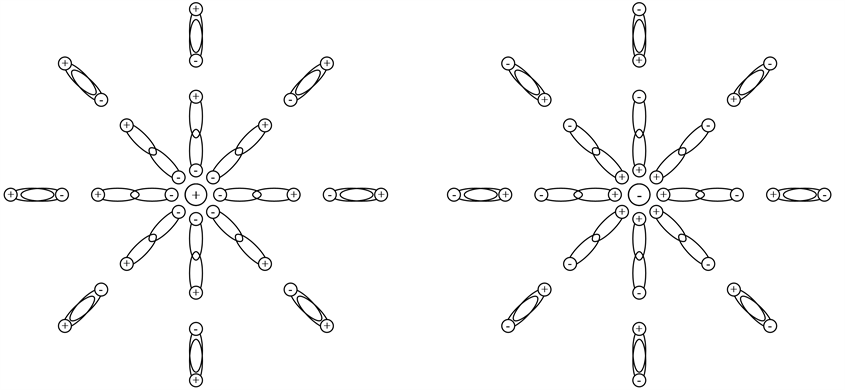
Figure 4. Schematic diagram of electric field forming
图4. 电场形成示意图
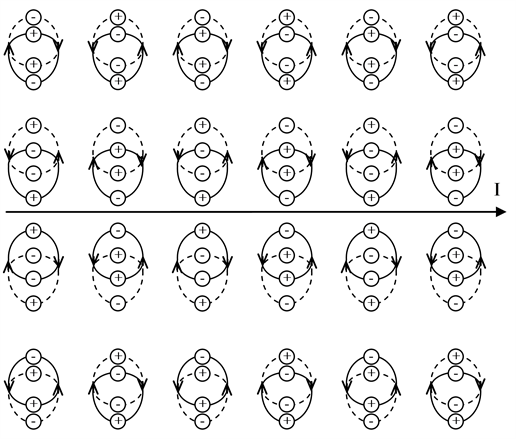
Figure 5. Schematic diagram of magnetic field forming around direct current
图5. 直电流的磁场形成示意图
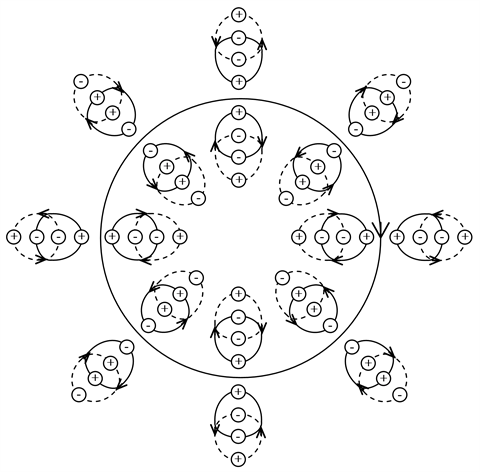
Figure 6. Schematic diagram of magnetic field forming around loop current
图6. 环形电流的磁场形成示意图
的e+和顺时针运动的e−的轨道向图所在平面旋转;顺时针运动的e+和逆时针运动的e−的轨道向与图垂直平面旋转。在环形电流的内侧的EPRs,顺时针运动的e+和逆时针运动的e−的轨道向图所在平面旋转;逆时针运动的e+和顺时针运动的e−的轨道向与图垂直平面旋转,因而形成了磁场。
从本质上看,磁场是EPRs的旋转产生的,可采用EPRs的旋转来表示磁场,采用EPRs的旋转率表示磁场强度。采用EPRs的旋转表示磁场反映磁场本质上是暗(实体)物质的规律变化,使暗(实体)物质与(磁)场物质得到合理统一。
3.3. 电磁场
当EPRs受到电磁波源的影响,由于获得大量的能量,e−和e+的运动产生震荡,EPRs就形成了一对振荡电偶极子(见图7)。振荡电偶极子对周围的EPRs产生作用,使其成为振荡电偶极子。因此相邻的EPRs的电偶极矩取向与该EPRs的电偶极矩变化相协调,这样形成电磁波不断传递能量。
从本质上看,电磁场是由EPRs振荡产生的,可采用EPRs的振荡表示电磁场,采用EPRs的振荡率表示电磁场强度,采用EPRs的振荡频率区分电磁波的种类。采用EPRs的振荡表示电磁场反映电磁场本质上是暗(实体)物质的规律变化,使暗(实体)物质与(电磁)场物质得到合理统一。
3.4. 引力场
天体物理的观察表明超大星系团需要暗物质作用而存在[37] ,研究人员发现,一张暗物质“网”在宇宙中延伸并在各个星系间相互交织。他们认为暗物质是使各个星系联系在一起的“网”。没有它,宇宙或将不会以现在的形式存在[38] 。天体物理学的观察表明星系和星系团是由于暗物质光晕的吸引而保持在一起的[39] 。
如果没有一般物质,EPRs均匀分布。而有大量一般物质存在的空间,EPRs的密度提高。在星体周围,EPRs的密度具有一定的梯度,随着与星体的距离增加而密度降低。EPRs与一般物质之间的作用有瞬时库伦力、瞬时洛伦兹力、瞬时取向力和瞬时诱导力。瞬时库伦力和瞬时洛伦兹力同时存在吸引力和推斥力且总体上平衡。瞬时取向力和瞬时诱导力也同时存在吸引力和推斥力,但吸引力占主导地位。EPRs之间的作用力包括瞬时库伦力、瞬时洛伦兹力、瞬时取向力和瞬时诱导力。瞬时库伦力和瞬时洛伦兹力同时存在吸引力和推斥力且总体上平衡。瞬时取向力和瞬时诱导力也同时存在吸引力和推斥力,但吸引力占主导地位。
引力场主要表现在EPRs密度的变化,没有EPRs密度的变化就没有引力场。当存在一般物质时,一般物质质量越大,EPRs的密度增加越多;离一般物质越远,EPRs的密度增加越少。空间的EPRs有向一般物质运动的趋势,达到一定的密度后吸引力和推斥力相互平衡,这样就形成了引力场。
从本质上看,引力场是由EPRs密度变化产生的,可采用EPRs的密度变化表示引力场,采用EPRs的密度变化率表示引力场强度。采用EPRs的密度变化表示引力场反映引力场本质上是暗(实体)物质的规律变化,使暗(实体)物质与(引力)场物质得到合理统一。
采用EPRs模型可以很好地解释电场、磁场、电磁场和引力场,实现了电场、磁场、电磁场和引力场的合理统一,也实现了暗(实体)物质与场物质的合理统一。
4. 结论
初步建立暗物质的EPRs模型,一个EPR中含有一个电子e−和一个正电子e+,e−和e+相互作用,不停地围绕共同的中心O做圆周运动。基于该模型能得到以下结论:
1) EPRs之间的作用力包括瞬时库伦力、瞬时洛伦兹力、瞬时取向力和瞬时诱导力。瞬时库伦力和瞬

Figure 7. Schematic diagram of electromagnetic field forming
图7. 电磁场的形成示意图
时洛伦兹力同时存在吸引力和推斥力且总体平衡。瞬时取向力和瞬时诱导力也同时存在吸引力和推斥力,但吸引力占主导地位。
2) EPRs与一般物质之间的作用有瞬时库伦力、瞬时洛伦兹力、瞬时取向力和瞬时诱导力。瞬时库伦力和瞬时洛伦兹力同时存在吸引力和推斥力且总体平衡。瞬时取向力和瞬时诱导力也同时存在吸引力和推斥力,但吸引力占主导地位。
3) EPRs遍布整个宇宙。如果没有一般物质,EPRs将均匀分布。当空间存在一般物质,EPRs的密度提高,一般物质质量越大,EPRs的密度提高越多。EPRs的密度具有一定的梯度,随着距离增加而密度降低。
4) EPRs是一种能量较低的稳定粒子,在一定条件下吸收足够的能量电离成正负电子对;而正负电子对在一定的条件下释放出能量,形成较稳定的EPRs。从本质上来看,我们已经捕捉到了暗物质粒子。
5) 电场是由EPRs极化产生的,可采用EPRs的极化来表示电场,采用EPRs的极化率表示电场强度。采用EPRs的极化表示电场反映电场本质上是暗(实体)物质的规律变化,使暗(实体)物质与(电)场物质得到合理统一。
6) 磁场是EPRs的旋转产生的,可采用EPRs的旋转来表示磁场,采用EPRs的旋转率表示磁场强度。采用EPRs的旋转表示磁场反映磁场本质上是暗(实体)物质的规律变化,使暗(实体)物质与(磁)场物质得到合理统一。
7) 电磁场是由EPRs振荡产生的,可采用EPRs的振荡表示电磁场,采用EPRs的振荡率表示电磁场强度,采用EPRs的振荡频率区分电磁波的种类。采用EPRs的振荡表示电磁场反映电磁场本质上是暗(实体)物质的规律变化,使暗(实体)物质与(电磁)场物质得到合理统一。
8) 引力场是由EPRs密度变化产生的,可采用EPRs的密度变化表示引力场,采用EPRs的密度变化率表示引力场强度。采用EPRs的密度变化表示引力场反映引力场本质上是暗(实体)物质的规律变化,使暗(实体)物质与(引力)场物质得到合理统一。
9) 采用EPRs模型可以很好地解释电场、磁场、电磁场和引力场,实现了电场、磁场、电磁场和引力场的合理统一,也实现了暗(实体)物质与场物质的合理统一。